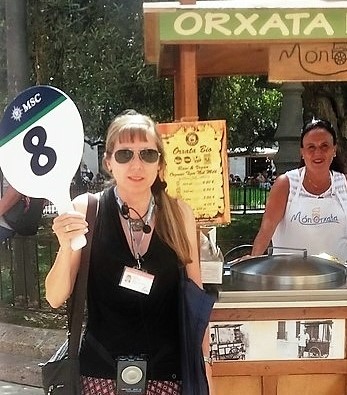San Juan del Hospital was the first church built after Valencia was re-conquered from the Moors in 1238.
San Juan del Hospital church has remains from different periods even from roman times. Remains of the median strip of the Roman circus of Valentia, appeared in the south courtyard.
The order of the knights of the hospital of saint John of Jerusalem was the first religious and military order to be founded in Jerusulem during the Crusades. The members missions was the defence of the Catholic faith and protection of the Pilgrims. Nowadays, they are known as the order of Malta. During the 12th century, the Knights Hospitallers spread through Europe and participated in the re-conquest of Spain from the Moors. In 1238 they helped king James 1st or Aragon to take Valencia. Their contribution was very important and, in gratitude the king granted the Knigths some land next to the Xerea gate to the city, which they afterwards defended. The knights built a hospital there, a church, a residence and a cemetery. Vestiges of those buildings are preserved in the historical site of San Juan del Hospital, which was assigned in 1966 to the Prelature of Opus Dei.
The Knights Hospitallers built in a time marked by profound political, religious and artistic change.
The early church was built according to the Romanesque Tradition. In the early 14th century, it was extended and Mediterranen Gothic Innovations were incorporated, all the while respecting Cistercian austerity. The church has a central nave with side chapels roofed with a pointed barrel vault, a poligonal apse and walls with wide windows glazed with alabaster.
At the entrance of the church there are several red crosses, these represent the number and postion of the Knights who lived in the monastic residence in the 13th century.
The columns of the chancel arches are made of re-used white marbel Roman shafts and pink marble shafts with Islamic capitals from the 10th century. In the south column there is a curious inscription: a Hewbrew sign representing ivy.
The wall paintings transition.
The Chapel of Saint Michael is decorated with wall paintings which can be dated back to the 13th century on the bases of their icongraphy, composition colour and ornmentation. A representation of Christ and his Glory and holding the Cross of Victory is shown, while on the oposite wall there is a representation of the church, personified as his Holy Spouse. They have a unique value because time, humidity and a number of fires have caused a loss of similar remains.
The southern courtyard contains the only medieval cemetery in the city, and its chapel is unique in Europe
In the place where the great emir of the city used to refresh himself, remains of an islamic fountain have been discovered. In that place the Knights laid out a cemetery. wealthy people and trade guilds financed sumptuos tombs in the shape of arcosolia, those people with limited financial resources were buried in the earth and identified with stelae, gravestones or burial mounds. The funeral chapel is an essential Element in the Medieval hospitaller architecture, this is one of the few remainging examples in europe.
The Byzantine empress Constance was a benefactress of San Juan del Hospital, the daughter of the Holy Roman Emperor Frederick II, Constance of Hohenstaufen, was married to John Dokas Vatazes, Emperor of Byzantium. After his death Constance was welcomed to Valencia by his relative, King James I. Constance was very devoted to Byzantine martyr Saint Barbara, so a small chapel was built in her honour in San Juan del Hospital. Constance was buried there in 1307. The growing devotion to Saint Barbara led to the constrution of a new chapel
This devotion spread throughout the west. However the present chapel was built in the 17th century by Juan Bautista Perez Castiel, the most prestigious architect in that time. In 1689, when the chapel was completed the remains of Empress Constance was transfered there. Saint Barbara is the patron Saint of Pyrotechniques, and every year the Falleras Mayores -The queens of the Floats Festival- of Valencia come to the chapel to make a floral offering and to pray that the festivities are held without any incidents.
The Spina findings
In 1996, the European commission of culture approved the projects to restore the Baroque mausoleum and recover the first burial of Empress Constance of Hohenstaufen. Upon excavating the area of the original tomb, a crypt was found on the ground. The remains of a wall and layers of gravel were identified as the spina and the performance surface of the circus from roman times. There were also findings of daily remains of inhabitants of that period such as cups, lachrymose, bracelets, and strings of necklace beads.
The site was about to be demolished in 1943
During the Spainish Civil War, San Juan del Hospital church was looted and burnt, the condition of the church was so disastrous that the Archbishop of Valencia decided to demolish it. However the academic Elias Tormo prevented this and in 1943 the church was declared a National Historic-Artistic Monument. The cult was revived in 1966 when die archbishop of Valencia entrusted the complex to the Prelature of Opus Dei. Since then the efforts have been made to restore the church to its natural beauty. While also devolping initiatives of catechism, solidarity and the spread of culture. In 1997, the site was declared a museum in situ, and the San Juan del Hospital foundation was constituted.

